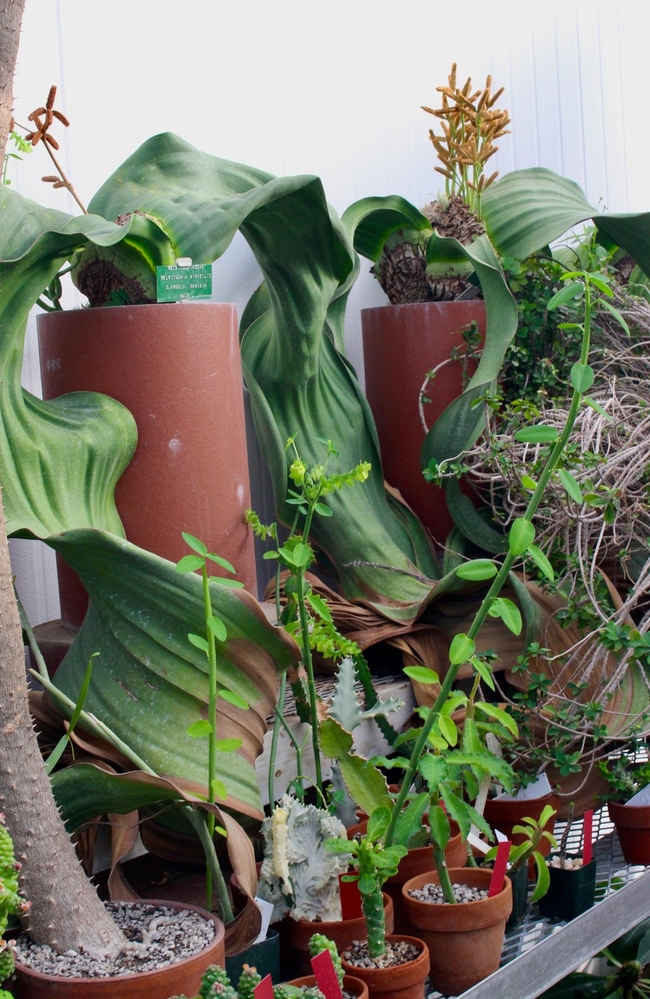Located between playing fields and pickleball courts along a popular bikeway into the main CSU Chico campus, the Biological Sciences Greenhouse is a state-of-the-art botanical and agricultural research facility. Over 1500 species of plants, including a collection of exotic and rare plants from around the world, are housed here in two buildings that are climate and light controlled. At a combined 6000 square feet, the Greenhouse provides classroom and working areas as well as growing space for its carefully curated plant collection.
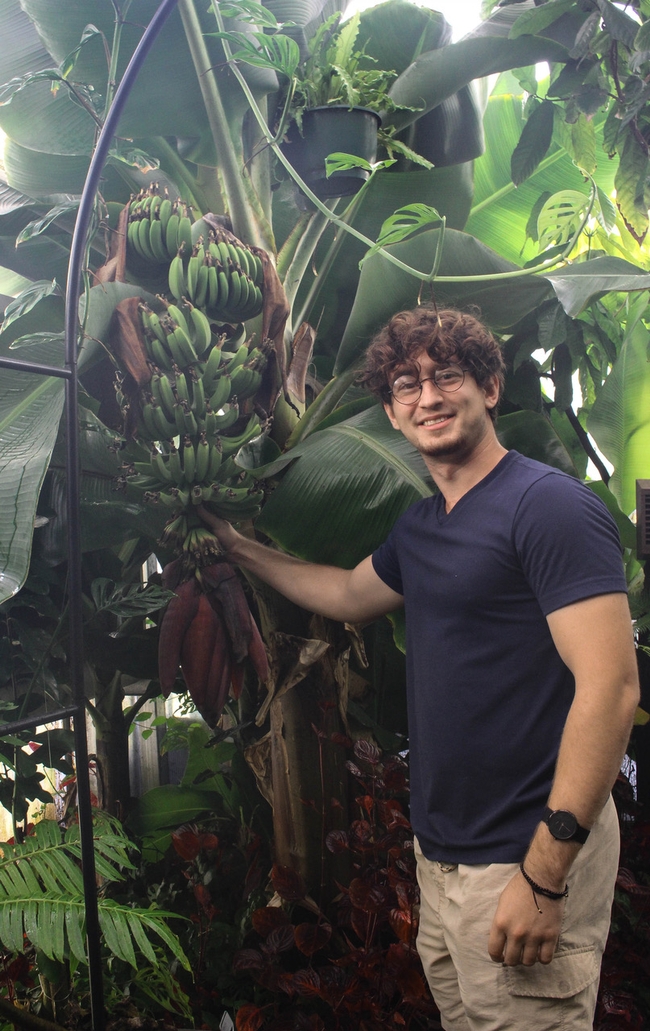
The first thing you notice when you enter the main conservatory building [O2] is the temperature. There are three distinct rooms, each representing habitats found throughout the natural world. Spiny, thorny cacti and succulents, crowd-pleasing carnivorous plants, and rare specimens like the odd, ancient Welwitschia mirabilis from Africa are found in the first room, along with other species that grow best in dryer, warmer conditions. Every part of the space is in use: plants grow on benches and up walls, hang from the ceiling, and trail along wires strung overhead. Tall, tree-sized specimens tower over other plants which taper down in size to the very smallest non-flowering plants such as mosses and liverworts (bryophytes).
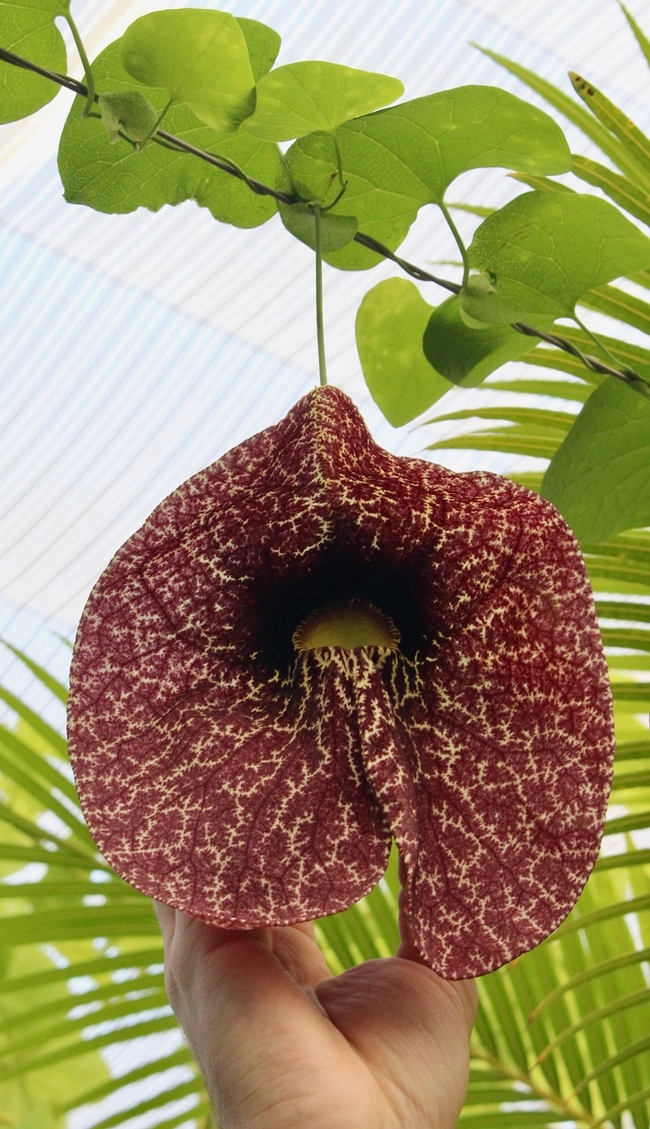
Stepping into the third growing room is like taking a trip to the tropics: warm, humid, rainy and misty. Here are wonderfully-scented orchids, lush tropical fruit trees and vibrantly colored flowers, in addition to plants thriving in small containers filled with water. A recent addition is a species of fern known to have the largest frond in the world, a gift from the CSU San Francisco greenhouse. Future plans for this space include incorporating a small pond with a waterfall.
The star attraction here might well be the fascinating and unique Amorphophallus titanum, a member of the Arum plant family. A very large plant, it will produce a single, huge leaf that can grow to twenty feet tall. Eventually a flower spike emerges, rapidly reaching 10-15 feet within a few weeks. This is the Corpse Flower, famous for its strong smell of rotting flesh, its striking appearance, and the fact that it only blooms every few years[O3] . The odor attracts insects that then pollinate the plant. The bloom typically fades away after 24 hours. CSUC's Corpse Flower is currently forming its flower stalk. Shaine suggests checking news outlets to learn when to drop by to see and smell this phenomenon!
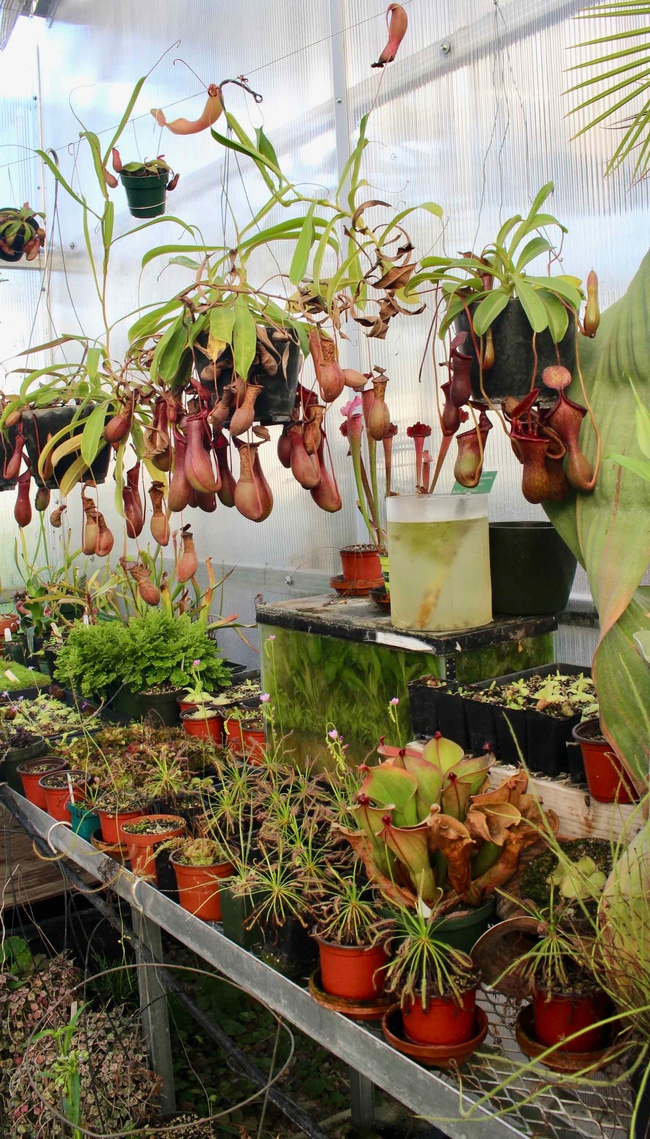
Shaine says that the most important common denominator for all of the plants he curates is the soil or, more precisely, the growing medium.
“Growing plants in greenhouses is a different challenge than growing them in your home garden”, he explains. “Everything needs a high quality, loose, fast-draining mix that is considered “soilless” or compost-free. It's also important to use soil that won't decompose, in order to avoid creating an environment for rot and odors.”
Nutrients are added to the water in amounts which allow frequent feeding. This encourages healthy roots that favor plant growth. Additionally, pruning and keeping plants in smaller containers allows Shaine to grow larger species than the space might otherwise allow.
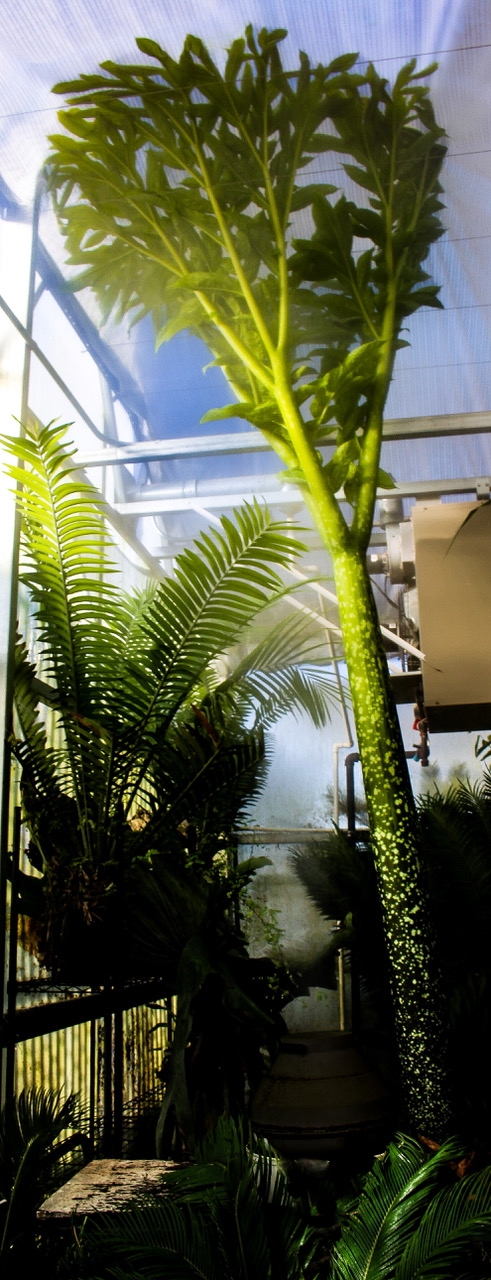
Another challenge is pest control. Pests can rapidly move through the greenhouses, damaging plants that are expensive and sometimes rare. When pests are found, Shaine starts simply, by hand picking, washing, or wiping them off. If necessary, he'll shift to biological controls: for example, he recently released a predatory mite that devoured not only the damaging mite species he wanted to control, but another pest (thrips) as well. Maximizing the plant's health by re-potting or feeding and changing its environment can also solve some problems. Spider mites can be eliminated, for instance, by moving plants from a dry area to a moister one, because these pests don't survive in moist or wet conditions. The greenhouse is an enclosed space, so treating plants systemically with a pesticide is an option, but it is an option Shaine prefers to avoid whenever possible.
Opening up this green world to share his passion and to educate more people is one of Shaine's goals. He encourages visitors or tours and loves to show you his latest exciting plant “find.” If you are interested in viewing a plant that can eventually live for over 1,000 years, or one that digests insects for nutrients, or another that shoots up one fantastic, smelly flower every few years, consider making a foray to the CSU Chico Biological Sciences Greenhouses. For more information and to arrange a visit, contact Shaine Hill at smhill@csuchico.edu.
UC Master Gardeners of Butte County are part of the University of California Cooperative Extension (UCCE) system. To learn more about us and our upcoming events, and for help with gardening in our area visit our website. If you have a gardening question or problem, email the Hotline at mgbutte@ucanr.edu or leave a phone message on our Hotline at 530-552-5812. To speak to a Master Gardener about a gardening issue, or to drop by the MG office during Hotline hours, see the most current information on our Ask Us section of our website.
